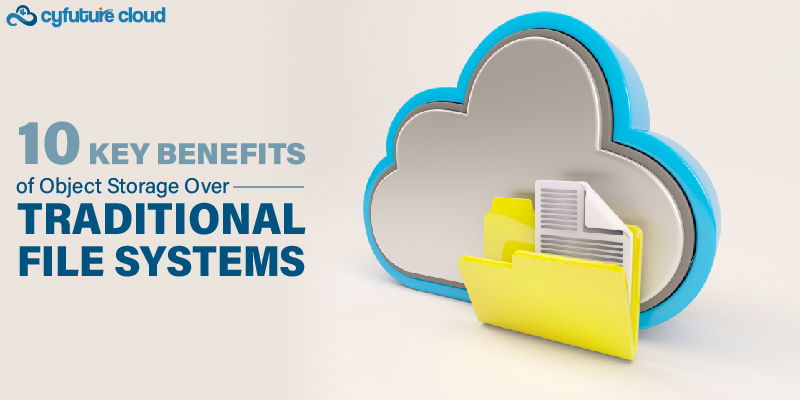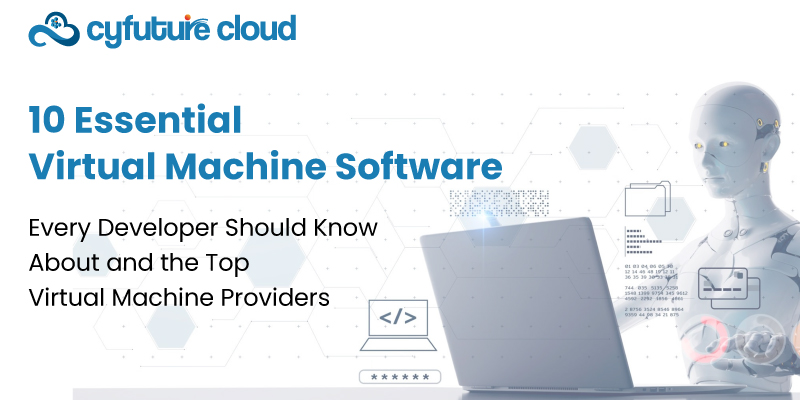Table of Contents
Zero trust is a security model in which all devices and networks, both inside and outside the organization, are treated as untrusted until proven otherwise. The model is based on the principle that an organization should not automatically trust any device or user, even if they are on the organization’s internal network. Instead, all access to resources should be based on a set of predefined policies and authenticated through multi-factor authentication.
With the increasing number of cyber threats and data breaches, the importance of implementing a strong security model has become crucial. Traditional security models, such as perimeter-based security, are no longer effective in protecting against modern threats. Zero trust security models provide a proactive approach to security by continuously verifying the identity of devices and users, and limiting access to resources based on their level of trust.
According to a recent survey, about 90% of global enterprises are currently in the process of adopting zero trust security models. This indicates a growing recognition among organizations of the importance of implementing a zero trust security model to protect against cyber threats.
What is Zero Trust?
Zero trust is a security model that assumes that all devices and networks, both inside and outside of an organization, are untrusted and must be verified before being granted access to resources. It is based on the principle that organizations should not automatically trust any device or user, even if they are on the internal network. Instead, access to resources is granted based on a set of predefined policies and authenticated through multi-factor authentication.
The Zero Trust model is designed to address the limitations of traditional perimeter-based security models which rely on the assumption that all internal devices and users can be trusted and all external devices and users are untrusted.
This model is designed to protect against modern cyber threats such as advanced persistent threats (APTs), phishing, and ransomware. Zero trust security models provide a proactive approach to security by continuously verifying the identity of devices and users, and limiting access to resources based on their level of trust.
Additionally, Zero Trust approach is said to be more effective in dealing with the challenges that arise from the increasing use of cloud services, Internet of Things (IoT) devices, and bring-your-own-device (BYOD) policies.
Key Principles of Zero Trust
The key principles of Zero Trust include:
– Always verify: All devices and users must be verified before being granted access to resources. This includes multi-factor authentication, such as a combination of something you know (password), something you have (token or smartcard), and something you are (biometrics).
– Limit access: Access to resources should be limited based on the principle of least privilege, meaning that users should only be granted the access necessary to perform their job functions.
– Assume breach: The Zero Trust model assumes that a breach will occur and that all devices and users are potential threats. It is designed to detect and respond to security incidents in real-time.
– Continuously monitor: Zero Trust security models continuously monitor devices and users to detect and respond to security incidents in real-time.
– Secure the data: Zero Trust models focus on securing the data, not just the network. This includes data encryption, data loss prevention, and data backup and recovery.
– Micro-segmentation: Zero trust model uses Micro-segmentation to dividing the network into smaller segments, making it harder for an attacker to move laterally through the network.
– Automation & Orchestration: Zero trust model uses Automation & Orchestration to automate the process of granting access and revoking access, making it easier to manage and scale.
– Risk-based policies: Zero trust model uses Risk-based policies to make decisions about what actions to take, based on the risk level of the request.
These principles are designed to provide a comprehensive approach to security, ensuring that all devices and users are continuously verified, access to resources is limited, and security incidents are detected and responded to in real-time.
How Does Zero Trust Differ from Traditional Security Models?
Zero trust security models differ from traditional security models in several ways:
– Trust boundaries: Traditional security models rely on a perimeter-based approach, where a trust boundary is established to separate internal devices and users that are trusted from external devices and users that are untrusted. Zero trust models assume that all devices and users, both inside and outside the organization, are untrusted until proven otherwise.
– Access control: Traditional security models grant access to resources based on the device or user’s location, such as being on the internal network. Zero trust models grant access to resources based on a set of predefined policies and authenticated through multi-factor authentication.
– Assumption of compromise: Traditional security models assume that the internal network is secure and focus on protecting the perimeter from external threats. Zero trust models assume that a compromise will occur and focus on detecting and responding to security incidents in real-time.
– Data security: Traditional security models focus on securing the network, while Zero trust models focus on securing the data, including data encryption, data loss prevention, and data backup and recovery.
– Micro-segmentation: Traditional security models rely on a flat network structure, while Zero trust models rely on Micro-segmentation to divide the network into smaller segments, making it harder for an attacker to move laterally through the network.
– Automation & Orchestration: Traditional security models rely on manual processes, while Zero trust models rely on Automation & Orchestration to automate the process of granting access and revoking access, making it easier to manage and scale.
– Risk-based policies: Traditional security models rely on predefined policies, while Zero trust models rely on Risk-based policies to make decisions about what actions to take, based on the risk level of the request.
Overall, Zero trust security models provide a more comprehensive approach to security, that focuses on continuously verifying the identity of devices and users, limiting access to resources based on their level of trust, and detecting and responding to security incidents in real-time.
Advantages of Zero Trust
The Zero Trust security model is recognized as a best practice in cybersecurity that provides a comprehensive approach to security, reduces risk, increases efficiency, and enhances compliance. The top advantages of adopting zero trust model is explained below:
Improved Security
Zero trust security models provide a proactive approach to security by continuously verifying the identity of devices and users, and limiting access to resources based on their level of trust. This helps to prevent unauthorized access and reduce the risk of data breaches. According to a study by Forrester Research, organizations that have implemented a zero trust security model have seen a reduction in data breaches of up to 80%.
Reduced Risk
Zero trust security models assume that a compromise will occur and focus on detecting and responding to security incidents in real-time. This helps to reduce the risk of a successful cyber attack and minimize the damage caused by a security incident.
Increased Efficiency
Zero trust security models use automation and orchestration to simplify the process of granting access and revoking access, making it easier to manage and scale. This helps to increase the efficiency of security operations and reduce the burden on IT staff.
Enhanced Compliance
Zero trust security models help organizations to meet regulatory compliance requirements by continuously verifying the identity of devices and users and limiting access to resources based on predefined policies. This helps organizations to demonstrate compliance with regulations such as HIPAA, PCI-DSS, and GDPR. Additionally, the Zero Trust approach is said to be effective in dealing with the challenges that arise from the increasing use of cloud services, IoT devices, and BYOD policies.
Implementing Zero Trust
Implementing Zero Trust is a continuous process that requires organizations to constantly monitor and assess the risk, and adapt their security strategies accordingly. According to a survey by the Ponemon Institute, 70% of organizations that have implemented a zero trust security model have reported improved security and reduced risk.
Identifying and Classifying Assets
Implementing Zero Trust starts with identifying and classifying all assets within the organization. This includes identifying all devices, users, and applications, as well as the sensitive data they handle. This process allows organizations to understand the attack surface and prioritize the protection of critical assets. Additionally, it helps in identifying the assets that are at high-risk of attack and need more protection.
Establishing Access Controls
Once assets have been identified and classified, organizations can establish access controls based on the principle of least privilege. This means that users are only granted the access necessary to perform their job functions. Access controls can include role-based access controls, where users are granted access based on their role within the organization, and attribute-based access controls, where access is granted based on attributes such as the device type and location.
Implementing Multi-Factor Authentication
Multi-factor authentication is an essential component of Zero Trust security models. This includes a combination of something you know (password), something you have (token or smartcard), and something you are (biometrics). This ensures that only authorized users are granted access to resources.
Continuously Monitoring and Assessing Risk
Zero Trust security models rely on continuous monitoring and risk assessment to detect and respond to security incidents in real-time. This includes using security tools such as intrusion detection and prevention systems, security information and event management systems, and threat intelligence platforms. Additionally, it helps in identifying the vulnerabilities and anomalies in the network and taking necessary actions.
Challenges and Solutions
Complexity: One of the main challenges of implementing Zero Trust security models is the complexity of the process. Zero trust models require organizations to continuously monitor and assess the risk, and adapt their security strategies accordingly. This can be challenging for organizations that have limited resources or lack the necessary expertise. Additionally, the complexity of Zero Trust can make it difficult to implement and maintain. According to a survey by the Ponemon Institute, 60% of organizations that have implemented a zero trust security model have reported complexity as a challenge.
Integration with existing systems: Another challenge of implementing Zero Trust is the need to integrate it with existing systems. This includes integrating with existing security tools, such as intrusion detection and prevention systems, security information and event management systems, and threat intelligence platforms, as well as integrating with other IT systems, such as identity management systems, and access management systems.
Cost: Implementing Zero Trust can be costly, as it requires organizations to invest in new security tools, such as multi-factor authentication, and security information and event management systems. Additionally, it requires additional resources, such as staff and IT infrastructure, to implement and maintain. According to a survey by the Ponemon Institute, 50% of organizations that have implemented a zero trust security model have reported cost as a challenge.
Solutions to overcome these challenges: To overcome these challenges, organizations can take the following steps:
- Develop a clear Zero Trust strategy and plan: A clear strategy and plan will help organizations to understand the requirements and resources needed to implement Zero Trust.
- Start small and scale up: Organizations can start by implementing Zero Trust on a small scale and then scale up as needed. This helps to reduce the complexity and cost of implementation.
- Leverage security experts: Organizations can leverage the expertise of security experts, such as managed security service providers, to implement and maintain Zero Trust security models.
- Use Zero Trust platforms: Organizations can use Zero Trust platforms that provide a comprehensive set of security tools and services, such as multi-factor authentication, access management, and security information and event management.
- Continuously monitor and assess risk: Organizations should continuously monitor and assess the risk, and adapt their security strategies accordingly.
By taking these steps, organizations can overcome the challenges of implementing Zero Trust and reap the benefits of enhanced security, reduced risk, and increased efficiency.
Case Study
One example of a company that has successfully implemented zero trust is Netflix. Netflix adopted a zero trust security model in order to protect its streaming service, which includes a vast amount of sensitive user data. By implementing zero trust, Netflix was able to reduce the attack surface and limit the potential damage from a data breach.
As a result of implementing zero trust, Netflix has been able to improve its overall security posture and protect sensitive user data. According to a case study published by the Zero Trust Security Network, Netflix was able to reduce its attack surface by 90% and improve its incident response time by 70%. Additionally, the company has been able to maintain a high level of user trust and satisfaction by ensuring that their data is kept secure.
Lessons learned from Netflix’s implementation of zero trust include the importance of starting with a strong security foundation, focusing on reducing the attack surface, and being proactive in incident response. Additionally, it is important to continuously evaluate and improve security systems and processes to keep up with the ever-changing threat landscape. Another important lesson is the need for buy-in from the organization and getting all teams aligned to the Zero Trust Model.
In a Nutshell
Zero trust security is a security model that is based on the principle of never trusting any user, device, or network, always verifying identity and context, and continually monitoring and enforcing security policies. Zero trust security aims to reduce the attack surface and limit the potential damage from a data breaches. It can also improve an organization’s overall security posture, and protect sensitive user data. Studies have shown that companies implementing Zero Trust Security have been able to improve their incident response time by 70% and reduce attack surface by 90%.
The future of zero trust is expected to continue to evolve as technology and cyber threats become more advanced. According to Gartner, by 2025, at least 30% of large enterprises will implement zero trust network access (ZTNA) in order to secure access to cloud applications. With the increasing trend of remote work and adoption of cloud-based services, the need for zero trust security will only continue to grow. This is further accentuated with the rise of IoT and 5G, which will bring in more devices connected to the network and will require Zero Trust security to secure them.
To implement zero trust security, companies should start by evaluating their current security systems and identifying areas for improvement. It is important to focus on reducing the attack surface, implementing multi-factor authentication, and being proactive in incident response. Organizations should continuously evaluate and improve their security systems and processes to keep up with the ever-changing threat landscape. Also, it is important to gain buy-in from the organization and align all teams to the zero trust model. Companies should also consider working with security experts to help them implement and maintain zero trust security systems. Additionally, organizations should invest in security training and awareness programs for employees to make sure that they are aware of the Zero Trust model and the importance of security in their daily work.
Send this to a friend

 Server
Colocation
Server
Colocation CDN
Network
CDN
Network Linux
Cloud Hosting
Linux
Cloud Hosting Kubernetes
Kubernetes Pricing
Calculator
Pricing
Calculator
 Power
Power
 Utilities
Utilities VMware
Private Cloud
VMware
Private Cloud VMware
on AWS
VMware
on AWS VMware
on Azure
VMware
on Azure Service
Level Agreement
Service
Level Agreement 



















